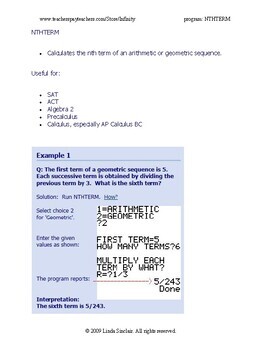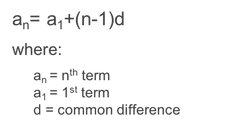

A generic term in position n n n is a ( n + 1 ) a_ a ( n + 1 ) . Then, the first term of a sequence would be a 0 a_0 a 0 , followed by a 1 a_1 a 1 . The terms of a sequence are (usually) represented by the letter a a a followed by the position (or index) as subscript. Each term can be considered the output of a function where instead of an argument, we specify a position.The order in which the numbers appear matters.Step 6: After finding the type of Sequence.A numerical sequence is an ordered ( enumerated) list of numbers where: Hence, we can state that the given sequence is Arithmetic Sequence.

Step 5: After finding the common difference for the above-taken example, the sequence becomes 3, 17, 31, 45. Step 4: We can check our answer by adding the difference, “d” to each term in the sequence to check whether the next term in the sequence is correct or not. Step 3: Repeat the above step to find more missing numbers in the sequence if there. Hence, by adding 14 to the successive term, we can find the missing term. Assuming the sequence as Arithmetic Sequence and solving for d, the common difference, we get, In the above example taking A1=3 and An=45. Wherever it is not, we can add the common difference to the number before the space of the missing number in the sequence. Step 2: Heck for missing numbers by checking the difference. For example, consider a sequence 3,17,? ,45. Step 1: Find the difference consecutive terms in the sequence & check whether the difference is the same for each pair of terms. The steps for finding the formula of a given arithmetic sequences are given below: Visit, the best place for learning, and get various calculators for making your job easier. Understand the concept in more detail with the explanations and procedure listed for Sequences. It is represented in the form as f(x)=Ax^2+Bx+C, where A, B, C are constants. It is also called a quadratic polynomial.Į.g. Second Degree Polynomial: It is a polynomial where the highest degree of a polynomial is 2. Sequence of Prime Numbers: A prime number is a number that is not divisible by any other number except one & that number, this sequence is infinite, never-ending.Į.g. Formula is given by an = an-2 + an-1, n > 2 Suppose in a sequence a1, a2, a3, …., anare the terms & a3 = a2 + a1 & so on…. Where a2 = a1 + d a3 = a2 + d & so on…įibonacci Sequence: A sequence in which two consecutive terms are added to get the next consecutive 3rd term is called Fibonacci Sequence.Į.g.

Arithmetic geometric sequence calculator series#
Harmonic series looks like this 1/a1, 1/a2, 1/a3, ……. Harmonic Sequence: It is a series formed by taking the inverse of arithmetic series.Į.g. Suppose in a sequencea1, a2, a3, …., anare the terms & ratio between each term is ‘r’, then the formula is given byan=(an – 1) × r Geometric Sequence: A sequence in which every successive term has a constant ratio is called Geometric Sequence.Į.g. Suppose in a sequence a1, a2, a3, …., an are the terms & difference between each term is ‘d’, then the formula is given by an = a1 + (n−1)d What are the Different Types of Sequences?Īrithmetic sequence: A sequence in which every successive term differs from the previous one is constant, is called Arithmetic Sequence.Į.g. The sequence is a collection of objects in which repetitions are allowed and order is important.


 0 kommentar(er)
0 kommentar(er)
